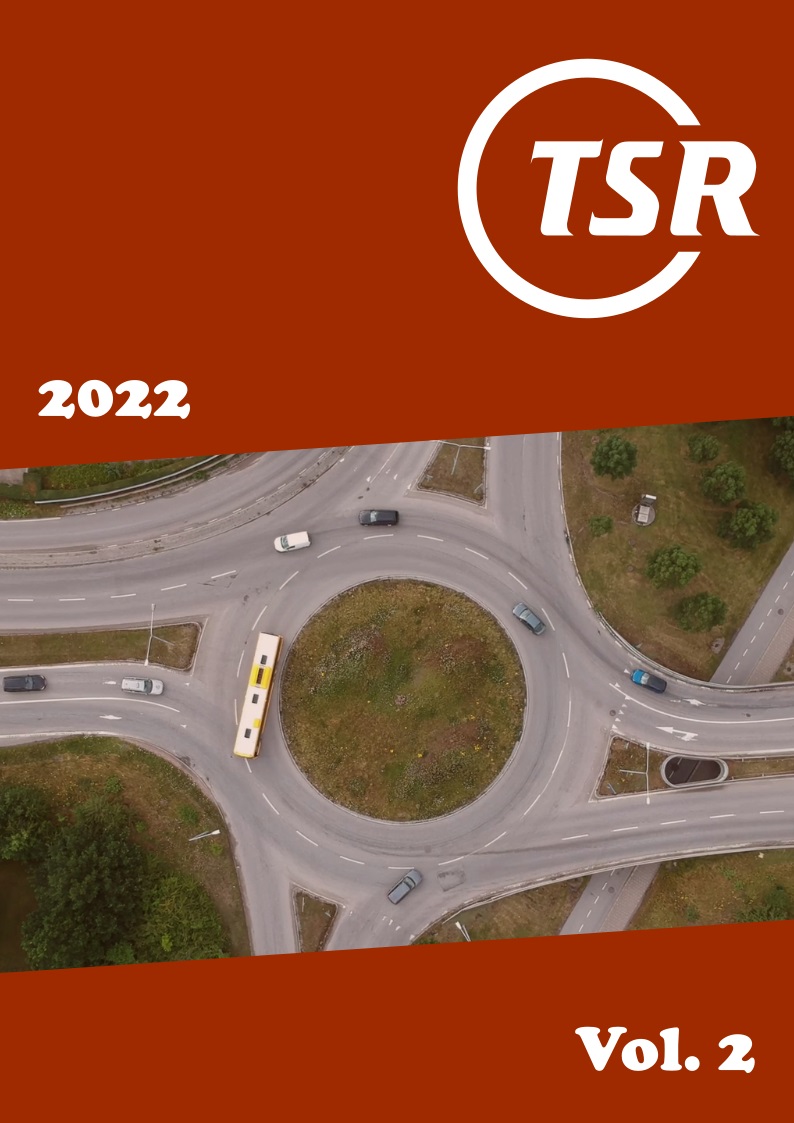Which is the more important for road safety—road design or driver behavioural adaptation?
DOI:
https://doi.org/10.55329/pvir7839Keywords:
accident rate, behavioural adaptation, feedback parameter, horizontal curveAbstract
Studies consistently show that sharp horizontal curves increase accident rate. One would therefore expect roads with many sharp curves to have a higher accident rate than roads with few sharp curves. This is not the case. The differences in road safety between roads with different profiles of horizontal road alignment are quite small. There are even studies suggesting that areas having roads with many curves have a lower number of accidents than otherwise identical areas with less curvy roads. The question arises: How can it be true both that sharp curves increase accident rate and that areas with roads with many sharp curves do not have a higher accident rate than areas with less demanding alignment? The answer is likely to be found in behavioural adaptation among drivers. The accident rates both in curves and on straight sections are strongly influenced by how drivers adapt behaviour to the number of curves per kilometre of road. This paper shows how behavioural adaptation can be quantified by means of the ‘human feedback parameter’ proposed by Evans. This parameter takes a value of -1 if drivers adapt behaviour so as to completely eliminate a risk factor. Values close to -0.7 for horizontal curves were estimated on the basis of micro-level studies. Thus behavioural adaptation reduces the increase in risk to about 30% of what it would have been without behavioural adaptation. In addition, a high frequency of curves leads to lower speed on the straight sections between curves.
Downloads
References
Alexander, G. J., H. Lunenfeld (1986), ‘Driver Expectancy in Highway Design and Traffic Operations’ (Washington, D.C.: U.S. Department of Transportation, Federal Highway Administration, Office of Traffic Operations), FWHA-TO-86-1, https://rosap.ntl.bts.gov/view/dot/890, accessed 31 July 2022.
Banihashemi, M. (2016), ‘Effect of horizontal curves on urban arterial crashes’, Accident Analysis & Prevention, 95, 20-26, https://doi.org/10.1016/j.aap.2016.06.014.
Cardoso, J. L. (2005), ‘Safety assessment for design and redesign of horizontal curves’, presented at 3rd International Symposium on Highway Geometric Design (Chicago, IL, US: 29 June–1 July 2005).
Dietze, M., G. Weller (2011), ‘Applying speed prediction models to define road sections and to develop accident prediction models: A German case study and a Portuguese exploratory study’ (ERA-NET ROAD project 823137: RISMET—Road Infrastructure Safety Management Evaluation Tools), Deliverable 6.2, https://www.cedr.eu/download/other_public_files/research_programme/eranet_road/call_2009_safety/rismet/06_RISMETdeliverable6_2.pdf, accessed 31 July 2022.
Elvik, R. (2012), ‘Analytic choices in road safety evaluation. Exploring second-best approaches’, Accident Analysis & Prevention, 45, 173-179, https://doi.org/10.1016/j.aap.2011.12.006.
Elvik, R. (2019a), ‘The more (sharp) curves, the lower the risk’, Accident Analysis & Prevention, 133, 105322, https://doi.org/10.1016/j.aap.2019.105322.
Elvik, R. (2019b), ‘A comprehensive and unified framework for analysing the effects on injuries of measures influencing speed’, Accident Analysis & Prevention, 125, 63-69, https://doi.org/10.1016/j.aap.2019.01.033.
Evans, L. (1985), ‘Human Behavior Feedback and Traffic Safety’, Human Factors: The Journal of the Human Factors and Ergonomics Society, 27 (5), 555-576, https://doi.org/10.1177/001872088502700505.
Fuller, R. (2005), ‘Towards a general theory of driver behaviour’, Accident Analysis & Prevention, 37 (3), 461-472, https://doi.org/10.1016/j.aap.2004.11.003.
Geedipally, S. R., M. P. Pratt, D. Lord (2019), ‘Effects of geometry and pavement friction on horizontal curve crash frequency’, Journal of Transportation Safety & Security, 11 (2), 167-188, https://doi.org/10.1080/19439962.2017.1365317.
Gooch, J. P., V. V. Gayah, E. T. Donnell (2016), ‘Quantifying the safety effects of horizontal curves on two-way, two-lane rural roads’, Accident Analysis & Prevention, 92, 71-81, https://doi.org/10.1016/j.aap.2016.03.024.
Gooch, J. P., V. V. Gayah, E. T. Donnell (2018), ‘Safety performance functions for horizontal curves and tangents on two lane, two way rural roads’, Accident Analysis & Prevention, 120, 28-37, https://doi.org/10.1016/j.aap.2018.07.030.
Hauer, E. (1999), ‘Safety and the Choice of Degree of Curve’, Transportation Research Record: Journal of the Transportation Research Board, 1665 (1), 22-27, https://doi.org/10.3141/1665-04.
Haynes, R., A. Jones, V. Kennedy, et al. (2007), ‘District Variations in Road Curvature in England and Wales and their Association with Road-Traffic Crashes’, Environment and Planning A: Economy and Space, 39 (5), 1222-1237, https://doi.org/10.1068/a38106.
Haynes, R., I. R. Lake, S. Kingham, et al. (2008), ‘The influence of road curvature on fatal crashes in New Zealand’, Accident Analysis & Prevention, 40 (3), 843-850, https://doi.org/10.1016/j.aap.2007.09.013.
Høye, A. (2014), ‘Utvikling av ulykkesmodeller for ulykker på riks- og fylkesvegnettet i Norge’ [Development of crash prediction models for national and county roads in Norway] (Oslo: Institute of Transport Economics), TØI rapport 1323/2014, https://www.toi.no/getfile.php?mmfileid=36329, accessed 31 July 2022.
Jones, A. P., R. Haynes, I. M. Harvey, T. Jewell (2012), ‘Road traffic crashes and the protective effect of road curvature over small areas’, Health & Place, 18 (2), 315-320, https://doi.org/10.1016/j.healthplace.2011.10.008.
Levinson, D., H. Liu, W. Garrison, et al. (2021), ‘7.4 Horizontal Curves’, in Fundamentals of Transportation (Engineering Library: LibreTexts project), https://eng.libretexts.org/@go/page/47345, accessed 2 August 2022.
Skarra, N. (1973), ‘Vegstandardprosjektet. Hovedrapport om et opplegg for å vurdere vegers standard med hensyn på hastighet og trafikksikkerhet’ [The road standards project. Main report on a plan to assess road standards with regard to speed and traffic safety] (Oslo: Institute of Transport Economics), TØI rapport 23.
Downloads
Published
How to Cite
Issue
Section
License
Copyright (c) 2022 Rune Elvik

This work is licensed under a Creative Commons Attribution 4.0 International License.








